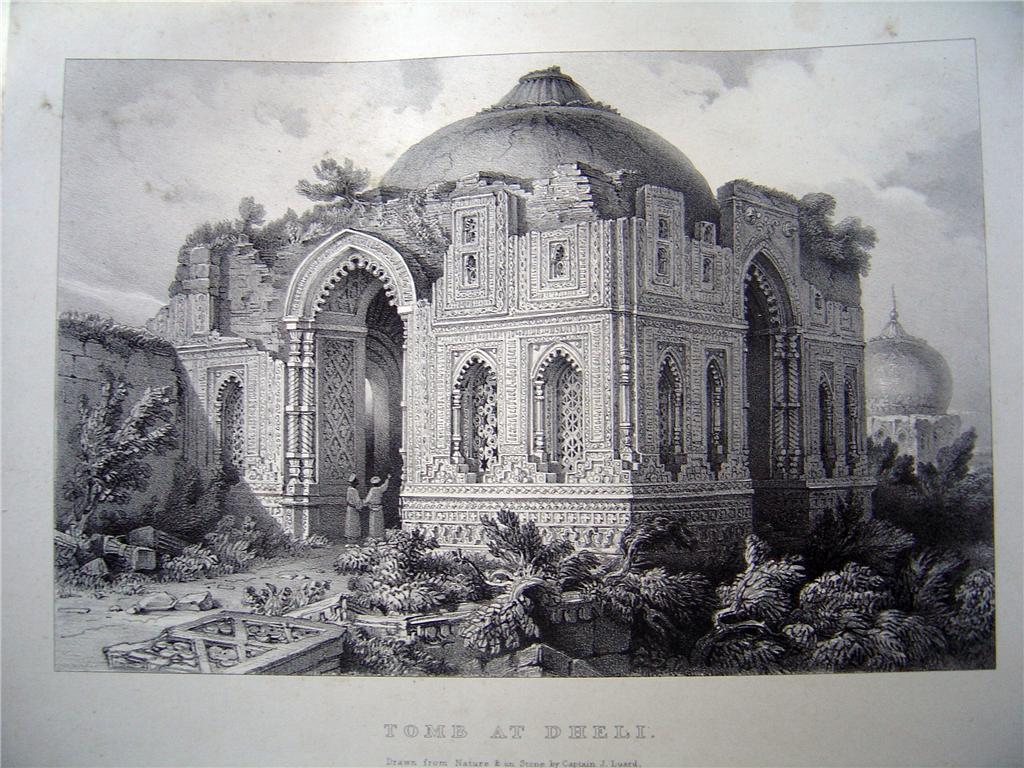

"Tomb at Dheli," from 'Views in India, Saint Helena and Car Nicobar, drawn from nature and on stone by John Luard' (London: Dickinson, 1838)
Source: ebay, Dec. 2006
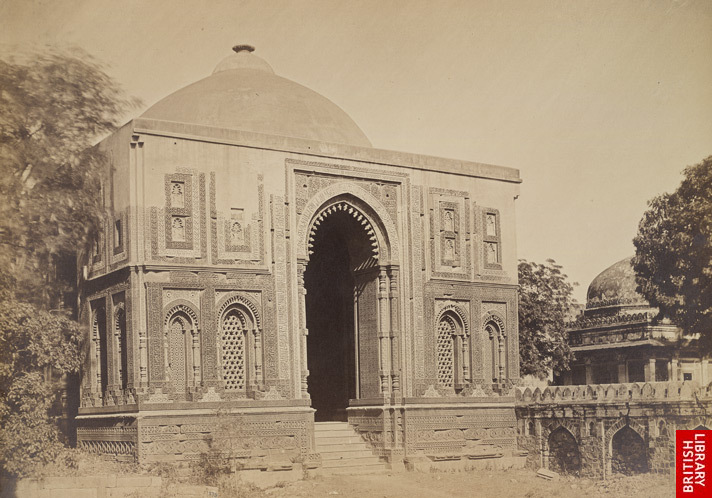
*"Entrance to Kootub Minar ['Alai Darwaza]," Delhi, a photo from the 1860's* (BL) [*photo 1860's*]


An albumen photo, c.1880's
Source: ebay, May 2008
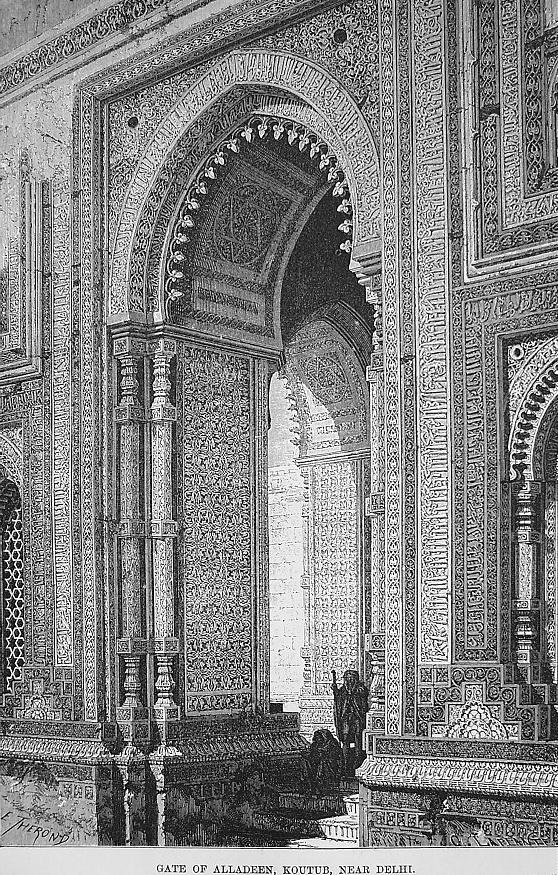
"Gate of Alladeen, Koutub, near Delhi," a wood engraving by E. Therond (Bickers & Son, London, 1878); *a very large scan of this engraving*
Source: ebay, Aug. 2005
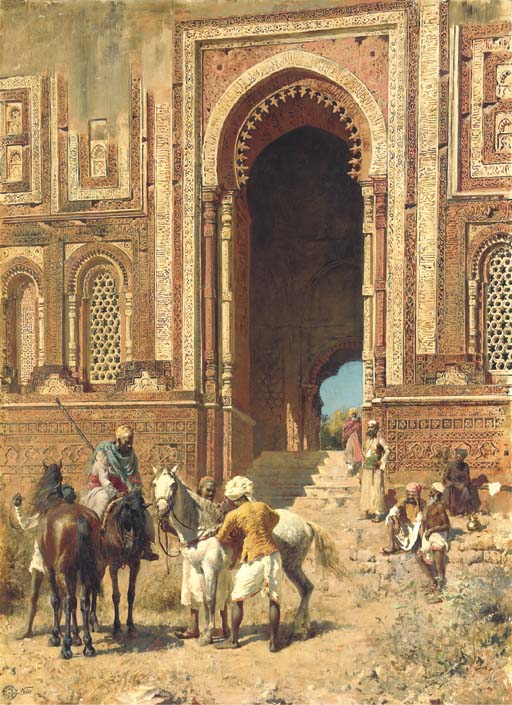
"Indian Horsemen at the Gateway of Alah-ou-din, Old Delhi," by Edwin Lord Weeks, c.1895
Source:
http://www.christies.com/LotFinder/search/LotDetail.asp?sid=&intObjectID=4380807&SE=CMWCAT04+106463+%2D1917709763+&QR=M+1+39+Aqc0000900+96560++Aqc0000900+&entry=india&SU=1&RQ=True&AN=40
(downloaded Nov. 2004)
"Edwin Lord Weeks (American, 1849-1903). "Indian horsemen at the
Gateway
of Alah-ou-din, Old Delhi. Signed 'E. L. Weeks' (lower left)' oil on
canvas.38
x 28 in. (96.5 x 71.1 cm.)."
Literature: Exhibition catalogue, The Empire of India Exhibition,
London
1895, p. 214 (with the title above given by Weeks, and caption written
by him: 'An early building in which Hindoo and Arabic ornament are
curiously
blended.'). Also, E. L. Weeks, From the Black Sea Through Persia and
India,
New York, 1895 and London, 1896, pp. 313-4 and p. 238 (features a
vignette
illustration of a portion of the building depicted in the painting,
with
the caption 'Windows in Old Delhi').
Lot Notes: Edwin Lord Weeks was the most famous American orientalist painter in the Paris expatriate community of academic artists of the late nineteenth century. Weeks travelled to Morocco, the Middle East and Persia and intrepidly ventured into India on three lengthy expeditions. On these trips, he frequently completed (or began) paintings in situ, despite the rigors of travel and climate. Having first shown at the Paris Salon in 1878, Weeks ultimately attained, in 1896, the highest distinction in the academic painter's world, the Salon's award of Chevalier de la Légion d'Honneur, and his work was exhibited to awards across Europe and America from 1876 to 1904. Weeks also achieved distinction as a travel writer; American magazines carried Weeks's vivid narratives of his exotic travels, illustrated with his own sketches, rendered in oils en grisaille. Many of these narratives were compiled in book form in From the Black Sea Through Persia and India (New York, 1895). At the height of his fame, in 1903, Weeks died suddenly and mysteriously at home in Paris, at the age of fifty-four. Two years later, his widow arranged a sale in New York of Weeks's remaining oeuvre, from small sketches to monumental canvases, in a three-day auction so remarkable it received front-page coverage in New York.
The building featured in the present picture is of an earlier date than most of the architecture depicted in Weeks's Indian paintings, which tended almost invariably to feature Moghul architecture. The scene is topographically precise, being one of the four sides of the tomb of Sultan Ala-ud-din Khilji (r.1296-1316), constructed adjacent to the great wall in old Delhi, which was erected in the 13th Century. An avid student of architectural history, Weeks himself wrote knowledgeably and admiringly of this building in From the Black Sea Through Persia and India (pp. 313-314):
'A remarkable and rare use of the Moorish horseshoe arch occurs in the building known as the gateway of Alah-ou-din at Old Delhi, erected about 1310. This is regarded as the most ornate example of Pathan work, and...is similar to that of many other Mussulman buildings, resembling in some respects the entrances of the mosque at Cordova, (although) many of the ornamental details and patterns are purely Hindoo, and of course peculiar to India'.Indeed the great 19th century architectural historian and explorer, James Fergusson (1808-1886), to whom Weeks often referred in his own writings, praises the building lavishly in his important History of Indian and Eastern Architecture (London, 1876), using words which surely helped lure Weeks to India and particularly to Ala-ud-din's tomb in Delhi: '(It) displays the Pathan style at its period of greatest perfection...(and) marks the culminating point of the Pathan style in Delhi. Nothing so complete had been done before, nothing so ornate was attempted by them afterwards.' (p. 510)
*A photogravure of the above painting by Edwin Lord Weeks, c.1880's*
Source:ebay, July 2001
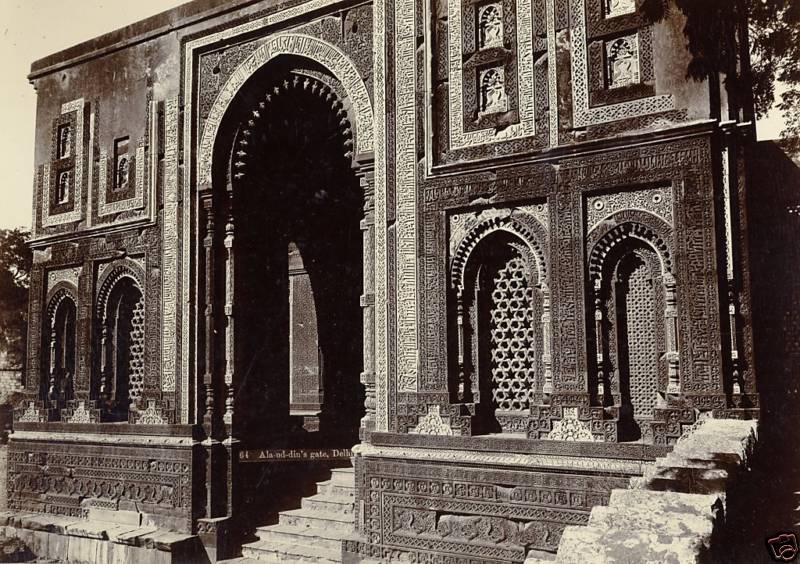
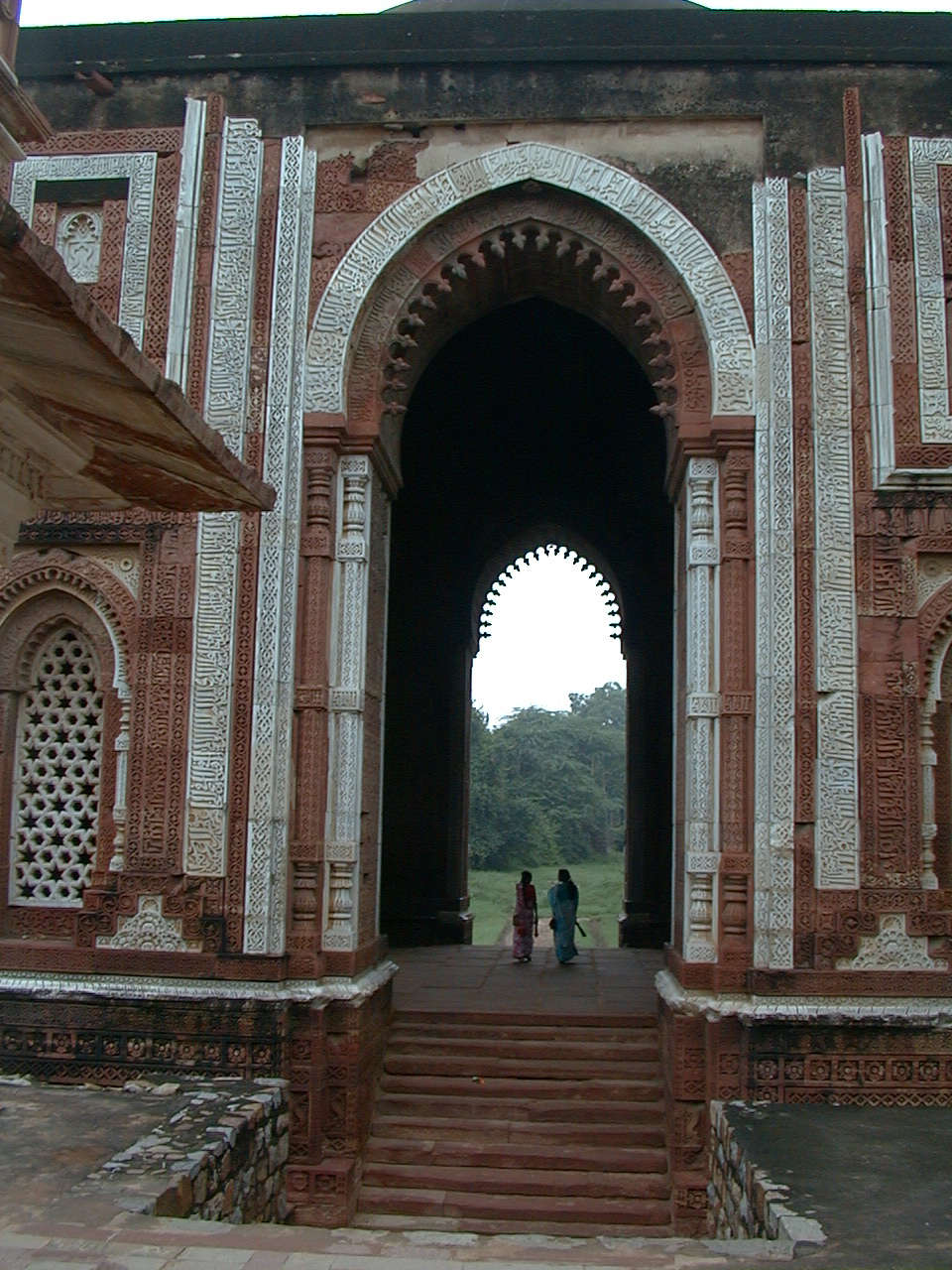
The Ala'i Darvazah as it looks today
Source: http://www.flickr.com/photos/mccross/304726773/
(downloaded Jan. 2007)
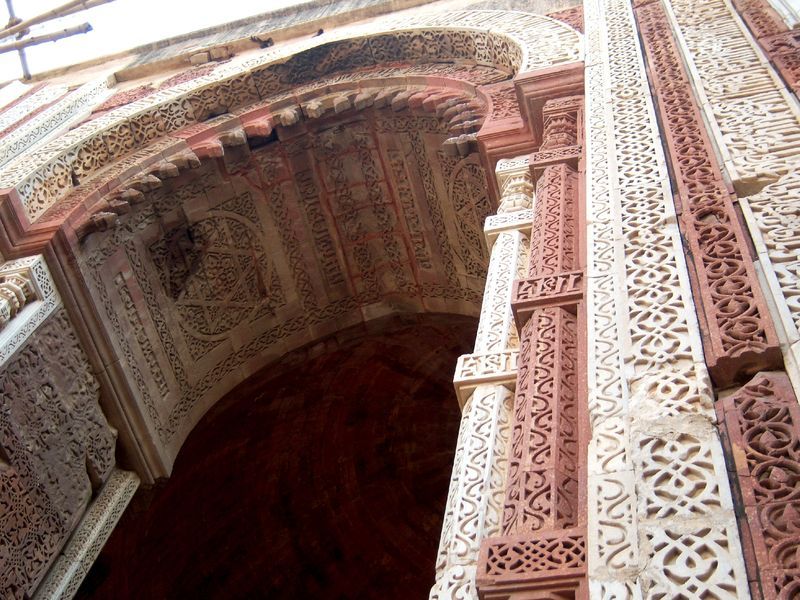
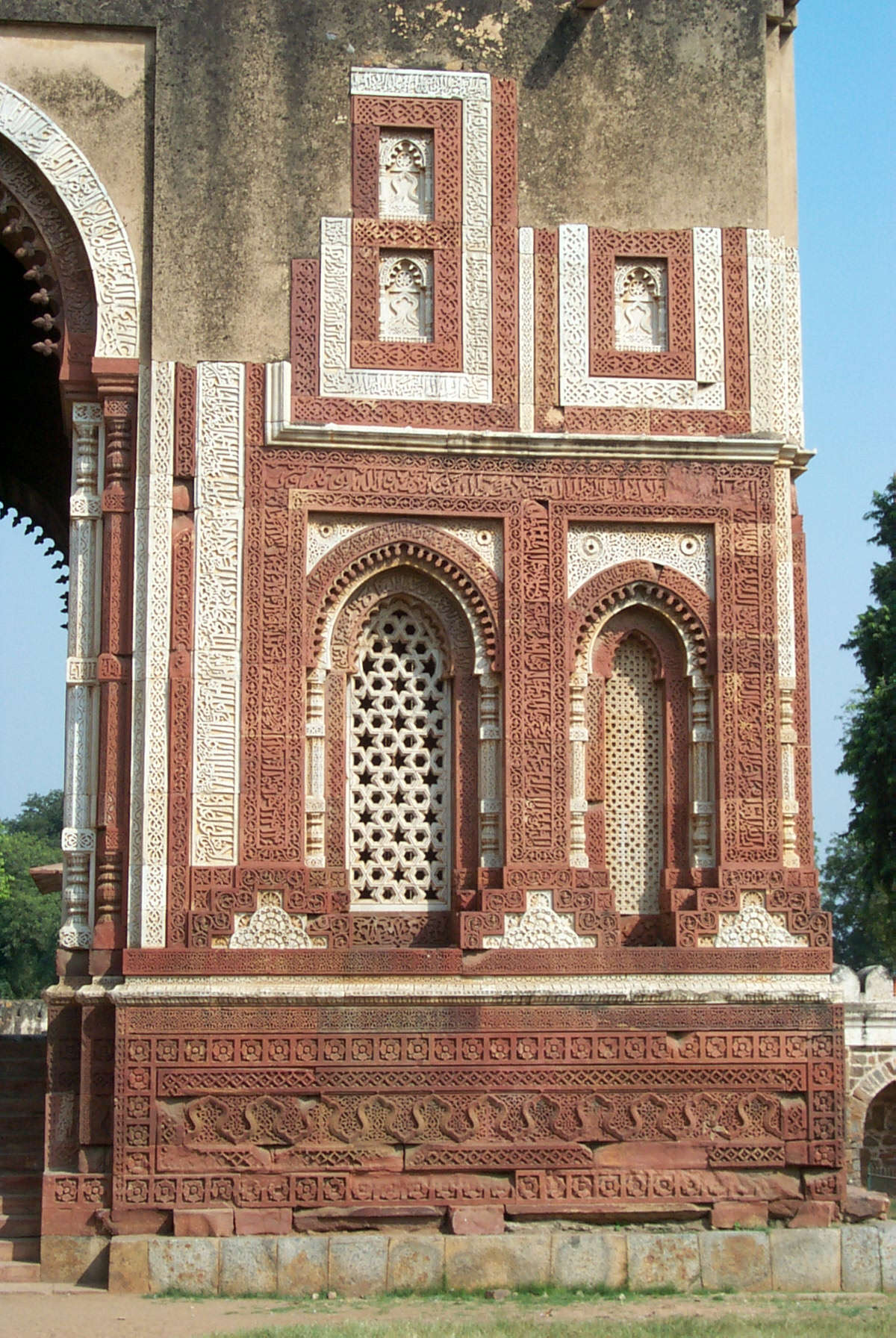
A close look at the decorative detail
Source: http://www.shieldsaroundtheworld.com/origs/P0004282.jpg
(downloaded Aug. 2005)
== Indian Routes index == Indian Routes sitemap == Glossary == FWP's main page ==